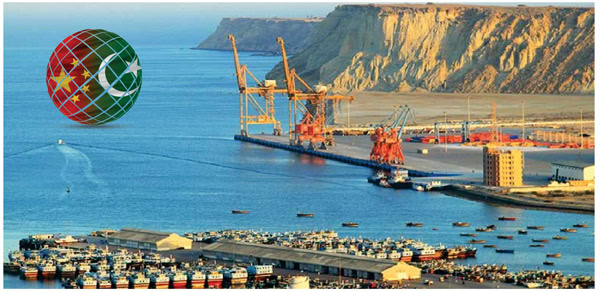onomic engagement through connectivity is the hallmark of the 21st century. Countries are trying to connect with countries to gain important resources and meet the demands of raw materials. BRI is a brainchild of China to engage countries through a network of roads and railways.
CPEC is one of BRI’s flagship projects, for infrastructure development and connectivity. The project aims at improving socio-economic conditions besides providing the facility for transit trade not only to Pakistan but also to all other regional countries. CPEC will help Pakistan’s economy stabilize in the long run, and it has already proven beneficial in the short term.
One of the significant advantages of CPEC is that it is a source of foreign investment in Pakistan. The Chinese government has pledged to invest about $65 billion in the whole infrastructure project. Significant investment has already been made in mega projects like railway tracks, energy infrastructure, highways, and special economic zones. According to a senior Chinese diplomat who spoke at a seminar titled “CPEC’s Defining Moment: Prospects and Challenges,” the landmark project has attracted $25 billion in foreign direct investment to address Pakistan’s energy and communication issues.
Furthermore, millions of employment opportunities have been created through this monumental project. Transport infrastructure and energy-producing power plants have employed both skilled and unskilled labor. According to the research report “Employment Outlook of CPEC: A Meta-analysis,” CPEC has already created 80,000 jobs through various projects that have started since 2013 and has the potential to produce 1.2 million additional direct jobs through its currently approved projects. The project has also created more than 190,000 jobs over the past nine years.
CPEC has also strengthened strategic and time-tested relations between two all-weather friends. New avenues of partnership have been generated by CPEC. The road link between Gwadar and Kashgar has given impetus to transit trade between the two countries. Besides, people-to-people engagement has increased through the labor participation of both countries in many projects. Many students have been provided opportunities for scholarships in China. Engagement through CPEC is a never-ending element between Pakistan and China because both countries require economic engagement.
At the same time, multiple issues are hovering around and could halt the progress if this project is not utilized in a befitting manner.
There are two opinions regarding the investment in CPEC. Critics say that CPEC is a debt trap for Pakistan, but the World Bank says 30% of investment is based on loans indirectly related to Pakistan’s government. The power projects are technically private investments. The power-producing companies are financing these projects through Chinese banks. These IPPs have to be paid for by the government. Therefore, Pakistan should be cautious about debt repayment, which needs concrete steps to minimize the risk.
Another issue is that projects are being delayed. The completion date of some projects has been reached, but others are yet to be completed. The big projects lack funds to operate, and some of the completed projects are being shut down. Pakistan is caught in the web of prolonged delays in five of its crucial railway and power projects. According to a report in the Express Tribune, any further delay would collapse the rail system and jeopardize the production of 31,000 megawatts of electricity.
Moreover, the lack of skill sets in the labor force is also a major issue for Pakistan. Most of the completed projects were inundated with Chinese labor. Furthermore, operating digital infrastructure and profiting from special economic zones both require highly skilled labor. Pakistani labor may face hurdles to do so, which may result in meager benefits to Pakistan. Skilled Chinese labor will not only reduce employment opportunities for Pakistanis but will also be costly for remaining projects.
Negative sentiments against CPEC are rising inside and outside the country. There are differing opinions among the provinces over the distribution of projects and employment opportunities. The fishermen’s protest in Gwadar is a reminder of deep sentiments against the authorities. The protesters are of the view that Chinese trawlers are being licensed for fishing. They consider it to be against their livelihood. These activities would create short-term delays in projects and instigate locals against Chinese projects. Pakistan needs to resolve the above issues to reap the maximum benefits from CPEC.
Sri Lanka is a pertinent case to learn from and to avoid mistakes. The projects are not profitable, and the country is ensnared in debt-trap diplomacy. Pakistan must not play with its sovereignty. It is time to take concrete steps to mitigate the issues about CPEC and avoid a situation like Hambantota. Pakistan must focus on loan repayment; otherwise, it will trigger further issues for the already debt-ridden economy. There is also a need to overhaul economic policy. Economic policy must be based on long-term goals. Exports should be prioritized to generate foreign exchange for debt repayment. Secondly, Pakistan should resolve issues with neighbors for smooth transit trade and connectivity. Friendly relations with neighbors will not only provide a peaceful environment for foreign investment but also help Pakistan and China connect with other countries to sustain CPEC.










